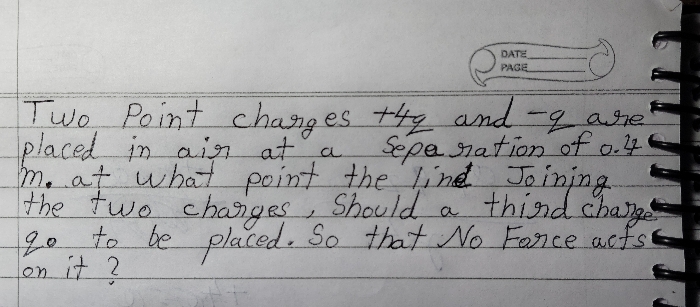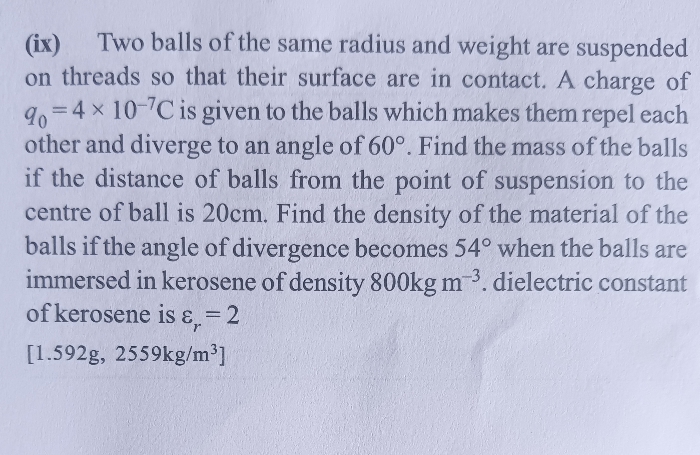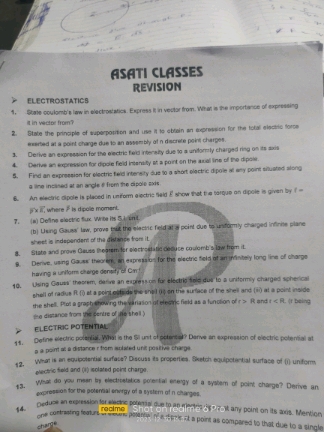CBSE Class 12-science Answered
a uniform ladder of mass 10 kg leans against a vertical wall making an angle of 53 degree with it . the other end rests on a rough horizontal floor . find the normal force and the the frictional force that the floor exerts on the ladder .
Asked by pooja dev | 22 May, 2011, 12:00: AM
There are four forces acting on the ladder of length L and making ?=53 degrees with the vertical smooth wall and on a horizontal rough floor.
1. the weight W=(10x9.8) =98N acting downwards through the middle of the ladder
2. vertical reaction on the floor acting upwards, equal to W.
These two forces form a couple of magnitude
W(L/2)sin?
3. Normal reaction N on the wall (horizontal) at the top end of the ladder, equal in magnitude to
4. Frictional force F acting horizontally at the bottom of the ladder.
These two forces form another couple equal to FLcos?.
Since the ladder is in equilibrium, the two couples must be equal, thus
W(L/2)sin? = FLcos?
From which we can solve for F
= (W/2)tan?
1. the weight W=(10x9.8) =98N acting downwards through the middle of the ladder
2. vertical reaction on the floor acting upwards, equal to W.
These two forces form a couple of magnitude
W(L/2)sin?
3. Normal reaction N on the wall (horizontal) at the top end of the ladder, equal in magnitude to
4. Frictional force F acting horizontally at the bottom of the ladder.
These two forces form another couple equal to FLcos?.
Since the ladder is in equilibrium, the two couples must be equal, thus
W(L/2)sin? = FLcos?
From which we can solve for F
= (W/2)tan?
= (98/2) tan 53o
= 65 N
Answered by | 01 Jul, 2011, 02:05: PM
Concept Videos
CBSE 12-science - Physics
Asked by adityagalar2007 | 06 Apr, 2024, 01:06: PM
CBSE 12-science - Physics
Asked by amlanmcob | 06 Apr, 2024, 12:27: PM
CBSE 12-science - Physics
Asked by hussain221man | 05 Apr, 2024, 08:44: PM
CBSE 12-science - Physics
Asked by manishamunda787 | 02 Apr, 2024, 11:07: AM
CBSE 12-science - Physics
Asked by am1954077 | 08 Mar, 2024, 04:57: PM
CBSE 12-science - Physics
Asked by rishabhverma895334 | 01 Mar, 2024, 07:24: AM
CBSE 12-science - Physics
Asked by rameshsanju123 | 08 Feb, 2024, 08:45: PM
CBSE 12-science - Physics
Asked by sachin.sondur2012 | 07 Feb, 2024, 11:26: AM
CBSE 12-science - Physics
Asked by millionairekishan | 25 Jan, 2024, 12:34: PM
CBSE 12-science - Physics
Asked by kalsichaitanya | 30 Dec, 2023, 04:08: PM











